Regenerative TMJ Solutions: Photobiomodulation
Photobiomodulation for TMD
Temporomandibular joint disorders (TMD) can cause pain in the jaw, face, and head, as well as problems with jaw movement. Photobiomodulation (PBM) is a treatment that uses low-level lasers or light-emitting diodes in the red and near-infrared spectrum to help reduce pain and improve how the jaw works.

How does photobiomodulation (PBM) work?
PBM uses gentle light energy, applied to the skin over the jaw muscles and joints. This light is not hot and does not damage the skin. Instead, it helps the body’s cells heal, reduces inflammation, and can relieve pain.
What are the benefits?
– Pain relief: PBM has been shown to lower pain levels in people with TMD, including those with muscle pain and joint pain in the jaw.
– Improved jaw function: Some people notice it is easier to open their mouth or move their jaw after treatment, though the main benefit is pain reduction.
– Non-invasive: PBM does not involve surgery, injections, or medications, and is generally well-tolerated.
What happens during treatment?
A healthcare provider will provide you with a photobiomodulation panel, as well as usage recommendations and dosage guidelines.Treatment can occur both in the office and at home.
Is it safe?
PBM is considered safe when performed under medical supervision. Most people do not feel any discomfort during the procedure, and side effects are rare.
Is PBM right for everyone?
PBM can be helpful for many people with TMD, especially those who have not improved with other treatments. However, it may not work for everyone, and the best results are often seen when PBM is combined with other therapies, such as platelet-rich fibrin, and oral orthotics.
What should I expect?
Most people notice some pain relief after a few sessions, but results can vary. PBM is not a cure for TMD, but it can help manage symptoms and improve quality of life.
If you have questions about PBM or whether it is right for you, schedule a consultation at Better Sleep Mid-Ohio Valley.
Further Reading
- Effect of Photobiomodulation Therapy on Painful Temporomandibular Disorders. Aisaiti A, Zhou Y, Wen Y, et al. Scientific Reports. 2021;11(1):9049. doi:10.1038/s41598-021-87265-0.
- Application of Photobiomodulation for Chronic Pain-Related TMD on Pain Points Versus Pre-Established Points: Randomized Clinical Trial. Furquim LR, Mélo AM, Barbosa AFS, et al. Journal of Photochemistry and Photobiology. B, Biology. 2023;238:112612. doi:10.1016/j.jphotobiol.2022.112612.
- Photobiomodulation With Simultaneous Use of Red and Infrared Light Emitting Diodes in the Treatment of Temporomandibular Disorder: Study Protocol for a Randomized, Controlled and Double-Blind Clinical Trial. Sousa DFM, Gonçalves MLL, Politti F, et al. Medicine. 2019;98(6):e14391. doi:10.1097/MD.0000000000014391.
- Effects of Different Photobiomodulation Dosimetries on Temporomandibular Dysfunction: A Randomized, Double-Blind, Placebo-Controlled Clinical Trial. Borges RMM, Cardoso DS, Flores BC, et al. Lasers in Medical Science. 2018;33(9):1859-1866. doi:10.1007/s10103-018-2533-6.
- Effectiveness of Laser Therapy in Treatment of Temporomandibular Joint and Muscle Pain. Buduru S, Oprea DM, Manziuc MM, Leucuța DC, Almășan O. Journal of Clinical Medicine. 2024;13(17):5327. doi:10.3390/jcm13175327.
- Simultaneous Red and Infrared Light-Emitting Diodes Reduced Pain in Individuals With Temporomandibular Disorder: A Randomized, Controlled, Double-Blind, Clinical Trial. de Sousa DFM, Malavazzi TCDS, Deana AM, et al. Lasers in Medical Science. 2022;37(9):3423-3431. doi:10.1007/s10103-022-03600-5.
- Immediate and Short-Term Effects of Phototherapy on Pain, Muscle Activity, and Joint Mobility in Women With Temporomandibular Disorder: A Randomized, Double-Blind, Placebo-Controlled, Clinical Trial. Herpich CM, Leal-Junior ECP, Gomes CAFP, et al. Disability and Rehabilitation. 2018;40(19):2318-2324. doi:10.1080/09638288.2017.1336648.
- Effect of Photobiomodulation in Patients With Temporomandibular Dysfunction Refractory to Botulinum Toxin Treatment: A Non-Controlled Multicentric Pilot Study. Rueda JAB, López-Valverde A, Marquez-Vera A, et al. Journal of Clinical Medicine. 2025;14(11):3778. doi:10.3390/jcm14113778.
- Intraoral Photobiomodulation Diminishes Pain and Improves Functioning in Women With Temporomandibular Disorder: A Randomized, Sham-Controlled, Double-Blind Clinical Trial : Intraoral Photobiomodulation Diminishes pain in Women With Temporomandibular Disorder. Herpich CM, Leal-Junior ECP, Politti F, et al. Lasers in Medical Science. 2020;35(2):439-445. doi:10.1007/s10103-019-02841-1.
- Photobiomodulation Therapy as an Additional Method for the Treatment of Temporomandibular Disorder Patients- A Narrative Review. Karic V, Penny C. Lasers in Medical Science. 2025;40(1):56. doi:10.1007/s10103-025-04324-y.
Take the First Step to Better Sleep
If you’re ready to get the restful sleep you deserve, it’s time to speak to one of our sleep professionals. Our team will work with you to create a personalized treatment plan that fits your specific needs. If you’re still unsure, take our short sleep quiz that identifies the most common sleep-related issues to see which ones you’ve experienced.
